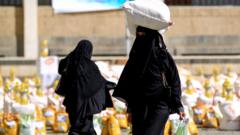This article explores the origins of the Israel-Palestine conflict, significant wars, territories involved, key disputes over land including Jerusalem, and the ongoing humanitarian crisis in Gaza, alongside perspectives on potential resolutions.
Israel-Palestine Conflict: A Comprehensive Overview of Historical Roots and Contemporary Issues

Israel-Palestine Conflict: A Comprehensive Overview of Historical Roots and Contemporary Issues
The Israel-Palestine conflict is a deeply rooted conflict characterized by longstanding tensions, violence, and disputes over territory and rights.
The Israel-Palestine conflict is one of the world's oldest and most violent disputes, stretching back over a century and stemming from historical claims to land, borders, and rights. Its roots can be traced to British control of Palestine after World War One following the fall of the Ottoman Empire, where a Jewish minority coexisted with an Arab majority. Tensions escalated when the United Kingdom supported the establishment of a "national home" for Jews, intensifying opposition from Arab Palestinians who held longstanding ties to the land.
From the 1920s to the 1940s, an influx of Jewish immigrants—many fleeing the Holocaust—saw the Jewish population increase to approximately 630,000 by 1947. The United Nations responded to escalating violence by proposing a partition plan favoring a Jewish state, which was met with widespread rejection from Arab nations. In 1948, amidst a series of wars and changing territorial claims, the state of Israel was proclaimed, leading to the displacement of approximately 750,000 Palestinians, an event they refer to as the Nakba, or Catastrophe.
The conflict took a further turn in the 1967 Six-Day War when Israel seized substantial territories, including the West Bank and Gaza, exacerbating tensions as about one million Palestinians came under Israeli occupation. Currently, the West Bank houses roughly three million Palestinians, with a significant Israeli settlement presence that Palestinians assert is illegal under international law; Israel, however, counters that these settlements are justified based on historical claims.
The status of Jerusalem remains one of the most contentious issues, as both Israelis and Palestinians claim the city as their capital. Israel controls West Jerusalem, and after the 1967 war, it occupied East Jerusalem, often leading to violent clashes over holy sites that hold cultural significance for both parties.
Within this complex environment, the Gaza Strip, home to 2.3 million impoverished residents, has seen severe humanitarian ramifications due to conflicts with Hamas and a blockade imposed by Israel and Egypt. The most recent conflict in October 2023 resulted in extensive casualties and ongoing humanitarian crises, attracting international condemnation and the call for resolutions.
Despite international discussions about an independent Palestinian state alongside Israel, and a historical commitment to a two-state solution, tangible progress remains elusive. The Palestinian Authority supports the two-state solution, whereas Hamas rejects recognition of Israel completely.
The issue of Palestinian refugees, now numbering around 5.9 million descendants of those displaced in 1948, along with their right of return, continues to be a primary point of contention, as does the role of organizations like UNRWA in managing refugee affairs.
In summary, the Israel-Palestine conflict encompasses a complex array of historical grievances, territorial disputes, and humanitarian concerns, with various international actors weighing in on potential resolutions that often become mired in the broader geopolitical landscape of the Middle East. The path forward remains fraught with challenges, necessitating understanding and cooperation from all involved parties.






















